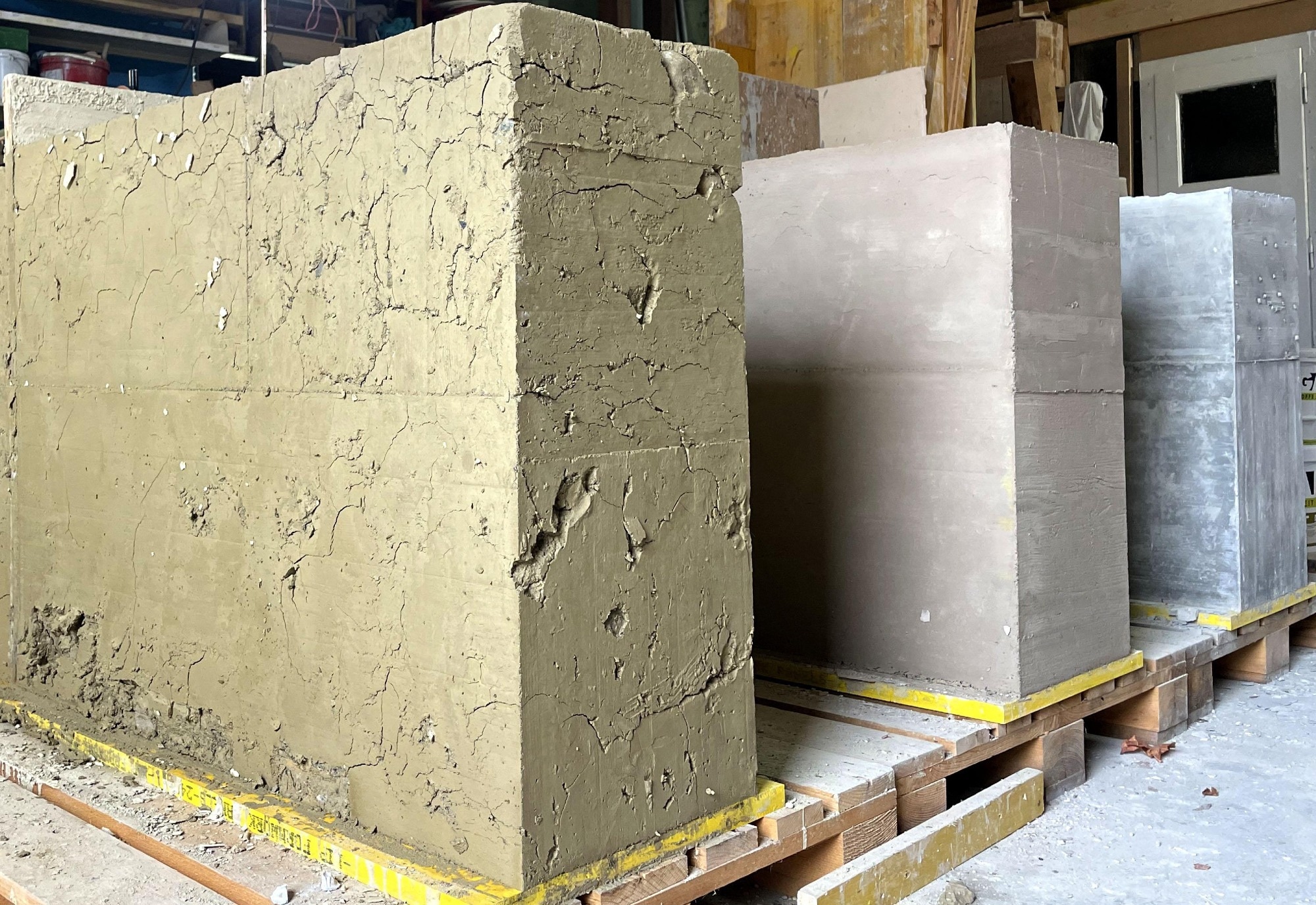A group of researchers from EPFL, ETH Zurich, and a Geneva-based architecture firm has created a novel form of non-reinforced concrete using stone offcuts.
 Prototype walls made with clay, lime, and cement. Image Credit: 2023 EPFL/Salvatore Aprea
Prototype walls made with clay, lime, and cement. Image Credit: 2023 EPFL/Salvatore Aprea
This approach, which decreases the reliance on carbon-intensive cement-based binders, is inspired by ancient techniques found in historical records.
Some walls can be constructed without the need for reinforced concrete, a material that contributes significantly to the construction industry’s carbon footprint. These walls could be constructed from unprocessed quarry waste. The research team, comprising experts from EPFL’s Archives of Modern Construction (Acm) research group, the ETH Zurich Chair of Sustainable Construction, and Archiplein, explored historical archives to rediscover forgotten construction processes.
The scientists examined several options, containing various processes and cement mixtures, as a portion of the Circular Building Industry (CBI) Booster program, supporting innovative construction initiatives based on circular principles.
The group constructed six load-bearing walls in Lucery-Villars, in Vaud Canton, utilizing mended stone-quarry waste and fieldstone towards the end of October. They divided their prototype structures into two groups to test two different construction methods and three types of mortar-based binders.
The primary process involved placing the mortar in the formwork before adding the stones, while in the secondary process, the order is upturned: the stones are initially arranged in place and then covered with mortar. The group tested three binders - one containing a small quantity of cement, another a lime-based mixture, and the third made from infertile soil. Given the size of many stones used, the process is named “Cyclopean” about early architecture.
Upcycled Waste Materials
Currently, stone-quarry waste undergoes energy-consuming processing before being reused. Cement production – a key component of concrete – entails an even more energy-intensive process. In cement production, limestone is heated to 1,450°C in continuously operating rotary kilns. Additionally, concrete is made from inert materials, posing limitations on available options.
For centuries, builders tried to cut costs by limiting how much cement they used and incorporating recycled waste materials into their concrete. The challenge now is to revive these old methods – not for financial reasons but for the sake of our planet.
Salvatore Aprea, Head, Research Group, Acm
For Marlène Leroux, a partner at Archiplein, the present state is incredibly perplexing, “We seem to have forgotten how to build simple load-bearing walls from stone offcuts, with a minimal carbon footprint and without the need for additives, chemicals, or steel reinforcement bars.”
From Roman Times to the 19th Century
The Acm group drew inspiration for the project by exploring technical archives spanning from Roman times to the 18th and 19th centuries, primarily from France and Germany. They sought old concrete and cement formulas, specifically focusing on methods that could utilize unprocessed stone offcuts and mortars with minimal or no cement. This historical approach aimed to incorporate ancient construction techniques into modern sustainable practices.
We found detailed experimental results where engineers had tested the strength of mortars with different lime concentrations. In most cases, these mortars were made from materials sourced locally or nearby.
Salvatore Aprea, Head, Research Group, Acm
The experts also analyzed early concrete-application methods. Prof. Guillaume Habert, who holds the ETH Zurich Chair, worked with Leroux and two of her colleagues at Archiplein – architect Francis Jacquier and engineer Olivier Dahenne – to improve computer models to recognize novel mortar formulae stimulated in the past to be suitable for modern specifications.
The scientist’s next step is to improve standardized, mechanized, low-carbon wall construction processes after the start of primary research. The scientist plans to build prototypes, run strength tests, and produce comparative tables, much in the same way as engineers and scholars of the past like Louis-Joseph Vicat, Jean Henri Hassenfratz, and John Smeaton, whose work is observed in detail for this research.
The research was funded by the Circular Building Industry Booster (CBI).